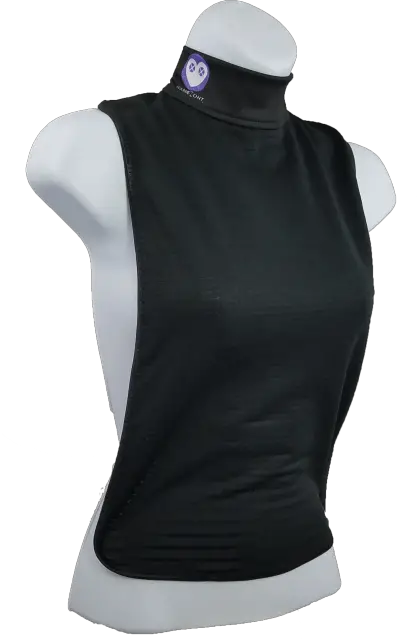With cyclocross being the sport of fall and gravel kicking off in early spring, having the right warm clothing is as important as having the right bike. Being cold during an afternoon at the park or ride through the countryside can be downright miserable.
One of the challenges of riding in the spring and fall is that conditions can change quite a bit during a ride. Gravel events in many parts of the country tend to warm up from the early morning starts, while late afternoon fall ’cross practices can get cold in a hurry when the sun sets.
The cycling vest is one traditional approach for dealing with changing conditions. Portable and compact, you can put it on or remove it as conditions dictate. Of course, there is also stuffing newspaper down your jersey as an impromptu wind blocker.
Colorado-based Warmfront takes a different approach. The Warmfront is a removable chest warmer that comes in two different thicknesses and fits under your jersey to help keep you warm during variable gravel conditions.
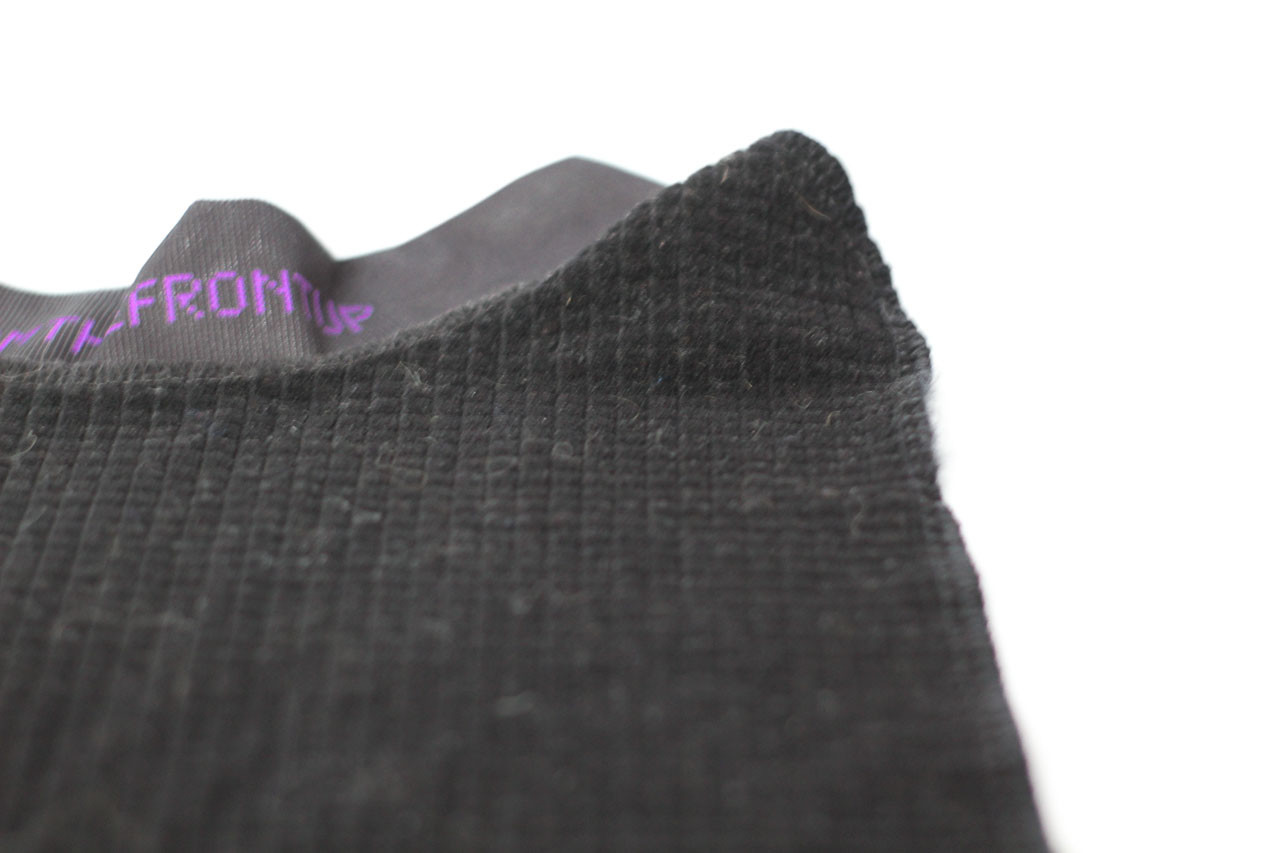
The Warmfront is a removable chest warmer for use during changing conditions. Warmfront Ultralight and Koselig Chest Warmers. © Cyclocross Magazine
Earlier this year during gravel season and again during the fall cyclocross season I’ve had the chance to test out the Warmfront Ultralight and Koselig chest warmers in changing conditions. Find out how it stacks up as an option to, quite literally, warm the front.
The Warmfront Approach to Staying Warm
On its website, Warmfront is the first to admit the Warmfront chest warmer is … unique. “Looks dumb, works smart.”
The Warmfront chest warmer looks like a bib, albeit one for staying warm, not keeping your clothes clean. The chest warmer goes underneath your jersey and features a collar to provide extra warmth much like a neck buff. You attach the Warmfront around your neck using a velcro collar.
The Warmfront comes in two models. The Ultralight is the lighter of the two, with a fleece body and elastic binding. No temperature rating is given for the Ultralight, and it weighs 45g. Both models are available in women’s and men’s options.
The Koselig is Warmfront’s cold-weather model. The name is Norwegian and refers to a sense of being “cozy.” The body of the Koselig is also fleece, albeit thicker than the Ultralight. Warmfront claims it is suitable for temperatures as low as 30-40 degrees F. The Koselig is a bit heavier at 53g.
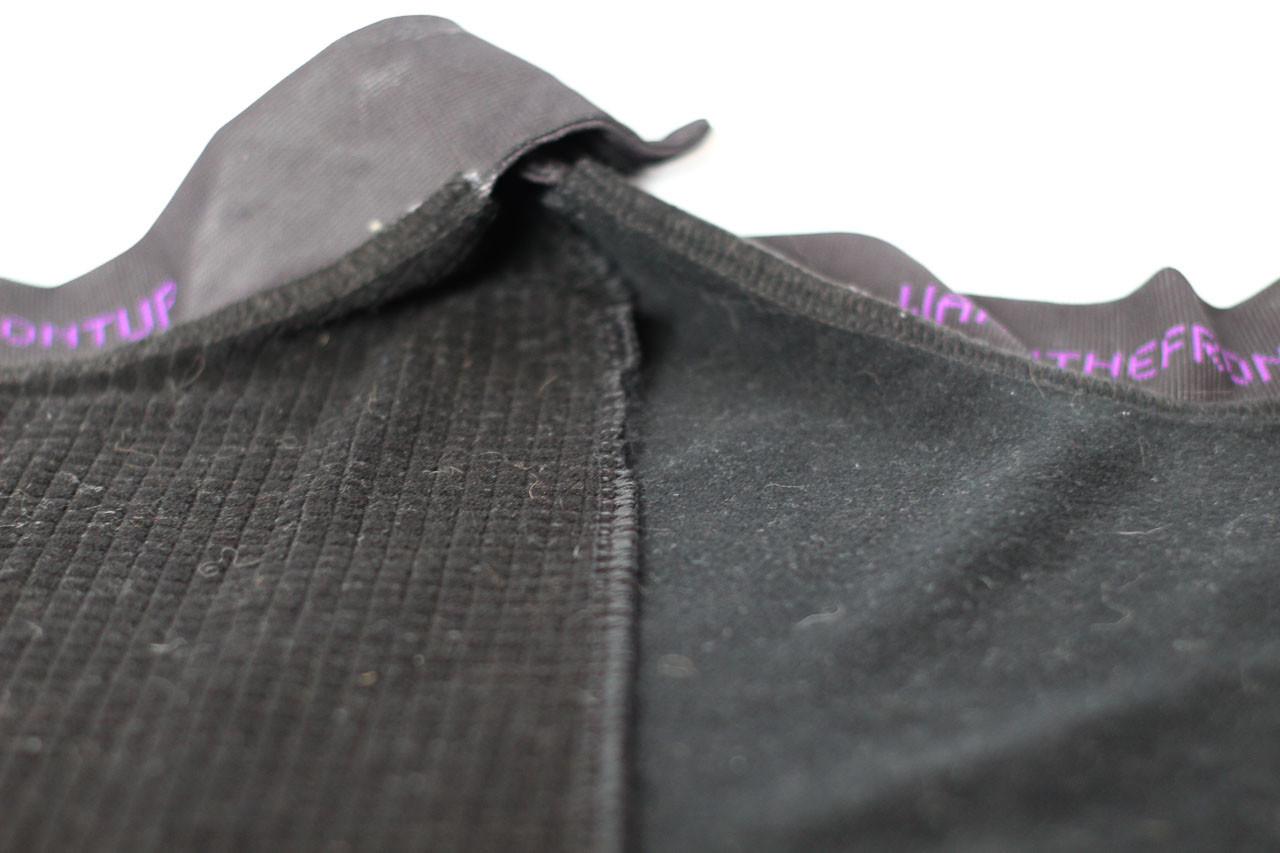
The Warmfront comes in two thicknesses: Ultralight (left) and the thicker Koselig. Warmfront Ultralight and Koselig Chest Warmers. © Cyclocross Magazine
The Women’s Ultralight and Koselig fit necks 14 to 17″ in diameter and is 12″ wide by 16″ tall. The Men’s chest warmers fit necks 16 to 20″ in diameter and the body is 10″ wide by 17″ tall.
Only one size is currently available for each, so the tall might find the Warmfront a little short and the short might find it a bit tall. I am 6’1″ and I found that the Warmfront effectively covered my chest. Offering at least two size options might help make sure everyone’s chest is fully covered.
The Ultralight retails for $24 and the Koselig for $29 via Warmfront’s website. Both models are handmade in Colorado.
Does It Warm the Front?
Prior to a gravel event in May, I found myself saying, “Hold on, I have to put my bib on.” I appreciate that Warmfront acknowledges the Warmfront looks a bit goofy, but in the end, does it really matter what you have on under your jersey?
The event I was provided the perfect test conditions for the Koselig. Temperatures for the mid-May race hovered in the 30s at the time of the 7 a.m. start, but eventually found their way toward 70 by the time the 108 miles of riding were over.
At that event and during other spring rides, I found the Warmfront did its job of keeping my front warm. I like that the Warmfront provides protection against wind from the front while still allowing heat to escape from my open back. This solves my common problem of overheating while wearing a cycling jacket.
The high collar on the Warmfront is also a nice addition. I am personally a fan of neck buffs for spring riding here in Wisconsin, and the Warmfront provides a built-in version for warming the neck.
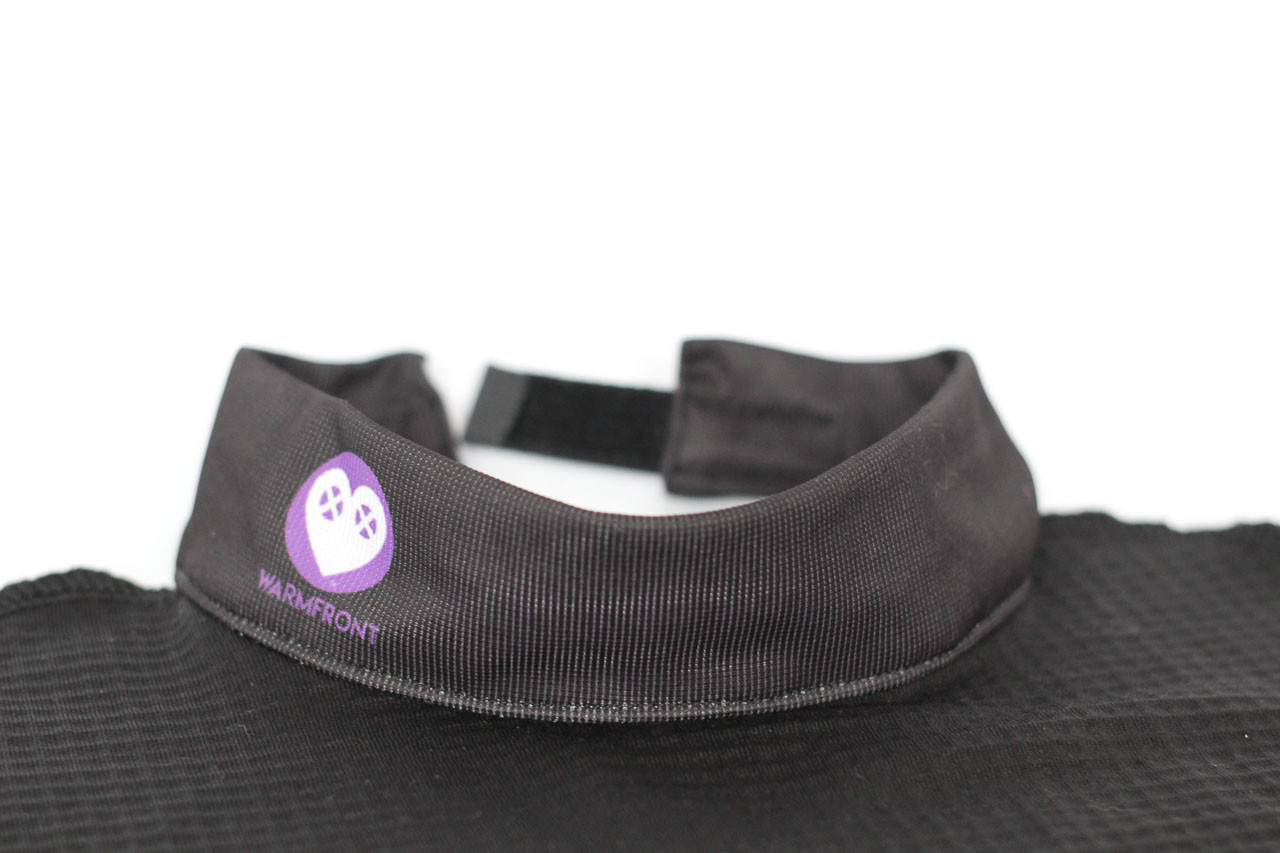
The Warmfront has a high collar to keep the neck warm. Warmfront Ultralight and Koselig Chest Warmers. © Cyclocross Magazine
I had no issues attaching the collar, but I did find it a bit difficult to keep the velcro attachment under my jersey. I only bring this up because it means you are at risk of having to explain, yes, I am wearing a bib warmer to your group ride mates. Perhaps it is a small inconvenience for keeping the wind off your chest.
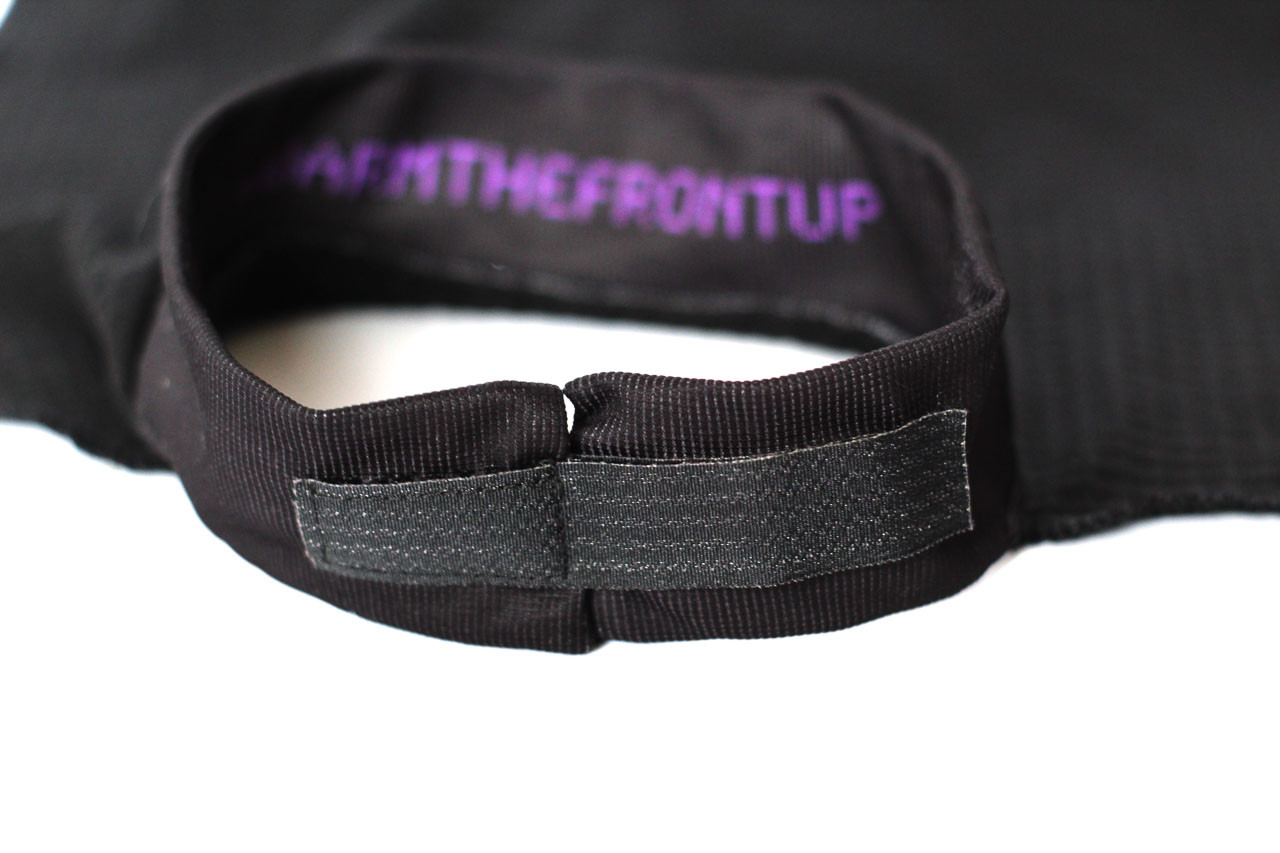
The Warmfront attaches around the collar with a velcro strap. Warmfront Ultralight and Koselig Chest Warmers. © Cyclocross Magazine
The obvious comparison for the Warmfront is a cycling vest, and so it is worth seeing how it stacks up against the traditional cold-weather gear. Like a vest, the Warmfront is easy to remove and stuff in your jersey pocket while riding.
If you are one of the 30% of readers who race race gravel events, a vest may be a better option should you have to put warmer clothes on while on the bike. If you are there for the adventure, it takes a matter of seconds to stop and put the Warmfront on.
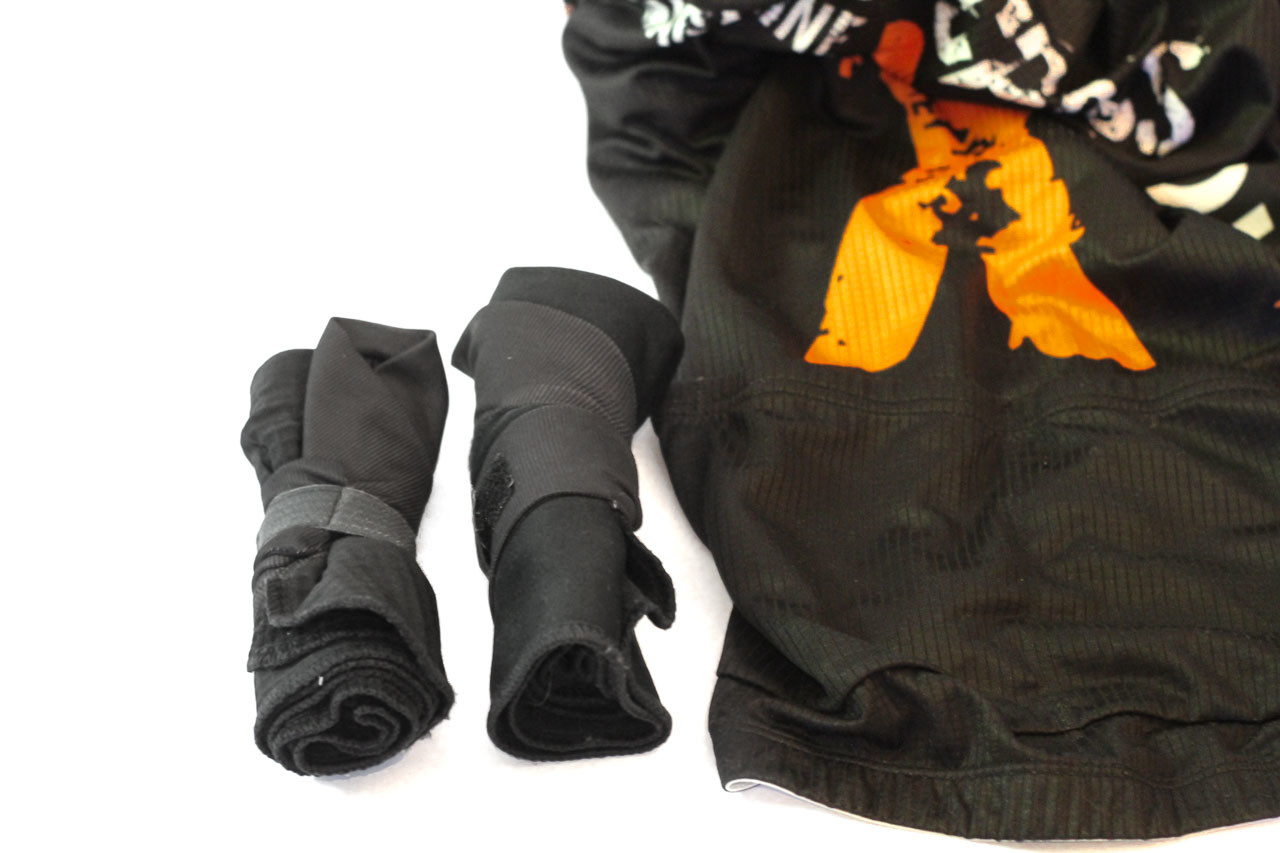
The Warmfront chest warmers roll up to fit in jersey pockets. Warmfront Ultralight and Koselig Chest Warmers. © Cyclocross Magazine
Price-wise, the Warmfront is cheaper than most high-end cycling vests. There are low-cost options, but vests from big-name companies run roughly $50-$100, so if you go with one of the sub-$30 Warmfront models, you will be able to stay cool for less.
For cyclocross, I think the Warmfront is best used for training rides. Its primary function is protecting against the wind, and with the open back, it will not keep your entire core warm when temperatures drop as the season moves into fall. You are likely to get more mileage from a jacket or base layer when trying to stay warm before and during races.
The Verdict
The Warmfront is effective at doing its job of warming the front. The fleece chest cover helps protect against the wind and provide warmth for your core while still allowing excess heat to escape from the back. It rolls up nicely and is easy to remove while riding, which is important for cycling layers.
The only downside is yes, it does look a bit weird, but staying warm is the ultimate goal, right? The Warmfront tucks under your jersey, and save the rear collar attachment at times, is unlikely to get noticed by your ride mates.
For more on the Warmfront, see the specifications below.
Warmfront Chest Warmer Specifications
Price: Ultralight: $24; Koselig: $29
Weight: Ultralight: 45g; Koselig: 53g (Men’s)
Material: fleece
Size: Women: 12″ wide x 16″ tall; Men: 10″ wide x 17″ tall
Neck: Women: 14″ to 17″; Men: 16″ to 20″
Origin: Colorado, USA
More Info: thewarmfront.com













